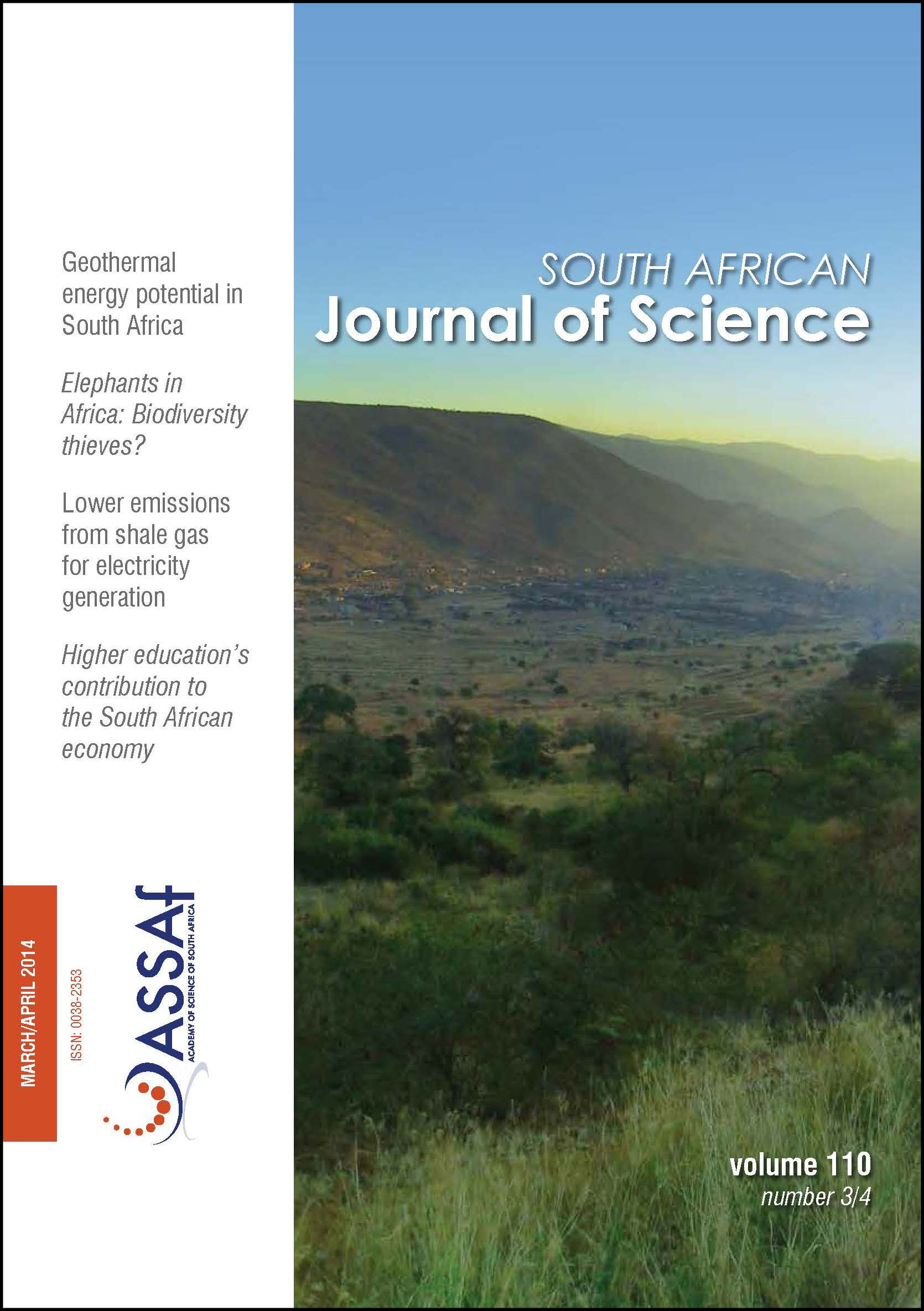Engine emissions and combustion analysis of biodiesel from East African countries
DOI:
https://doi.org/10.1590/sajs.2014/20130097Keywords:
biodiesel, combustion characteristics, emissions, fuel, JatrophaAbstract
Environmental, availability and financial problems associated with fossil fuels encourage the manufacture and use of biodiesel. In this study, vegetable oil was extracted from Jatropha curcas seeds sourced from Kenya and Tanzania. A two-step acid–base catalytic transesterification process was used to produce biodiesel because of the amount of free fatty acids present in the oil. The test rig used in the experiments was an Audi, 1.9-litre, turbocharged direct injection, compression ignition engine. Emissions were measured using an Horiba emission analyser system while combustion data was collected by a data acquisition system, from which cylinder pressure and rate of heat release of the test engine in every crank angle were calculated. The two biodiesels showed better emission characteristics than the fossil diesel included in the tests for comparison purposes. Cylinder pressure and heat release of the biodiesel were also within acceptable ranges. However, the emission and combustion characteristics differed between the two biodiesels – a result likely related to their different origins. These findings prove that the source of biodiesel is an important factor to consider.Published
2014-03-27
Issue
Section
Research Article
License

All articles are published under a Creative Commons Attribution 4.0 International Licence
Copyright is retained by the authors. Readers are welcome to reproduce, share and adapt the content without permission provided the source is attributed.
Disclaimer: The publisher and editors accept no responsibility for statements made by the authors
How to Cite
Maina, P. (2014). Engine emissions and combustion analysis of biodiesel from East African countries. South African Journal of Science, 110(3/4), 1-8. https://doi.org/10.1590/sajs.2014/20130097
Views
- Abstract 376
- PDF 518
- EPUB 182
- XML 210












.png)